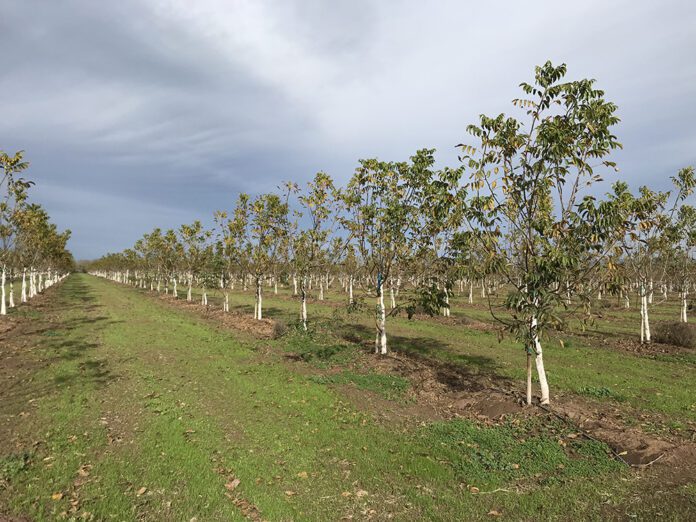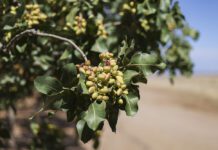
As we roll into another year of farming here in the Central Valley, many of us pray for the fog to roll in as well. Hopefully, since you’re probably reading this article a week or so after ringing in the new year, the fog we’re wishing for is more of an atmospheric phenomenon than the physiological event that happens after a night of too much champagne. It’s funny that both events have a relationship with carbon. One will help the trees store more carbon in carbohydrates over winter getting ready for spring, while the other happened because we don’t process alcohol very well with that much carbon dioxide (those pretty little, tiny bubbles in the glass your hosts toast) in what many call a rite of passage to destroy a day or two recovering in the new year. So, let’s get this year off to a better start now that the brain fog has worn off.
Having those dense, foggy mornings we used to have more often here in the valley helped us give a much-needed rest to our orchards and vineyards. When flood irrigation was more prevalent and we didn’t waste our water stores straight to the ocean to clean up the bay area’s wastes, we had more atmospheric moisture in the air. It was much easier to match the temperature and dew point spread where fog accumulates. That blanket reduced the amount of solar radiation that penetrated the lowest 10 to 50 feet of the valley’s air mass. Trees were allowed to go dormant sooner, stay dormant longer and recover. The colder it was, the more nature suppressed biological and physiological activity. Trees rested, root flushes slowed and soil biology slowed its activity and needed less feeding for root exudates to manage the symbiotic relationship that is critical for optimal plant health.
Now in 2024, we as farmers have gotten way more efficient with our irrigation and have very little flood ground left in our crops. As we get better, we still need some help with the system. Luckily, Mother Nature gave us an abundance of rain in 2023, and we were able to store a little more water going into winter. We have progressed through a few more recharge projects that make it affordable to flood in some areas if not free. If we get more rain and they lift the 10% allocation they were so quick to strap us with, we may see more of that. Flying over the delta and wetlands, it seems we should have ample moisture to get the temp and dew point to merge and enough moisture to see more fog this winter.
But what if we don’t? Coat your trees. That’s my recommendation. Spray them with a reflectant, or better yet a refractant, and add a little nutrition to the mix to hedge your bet against energy insufficiencies. The trees can warm up significantly with solar radiation. It may be 50 degrees F outside, and the normal formula says we aren’t losing our chilling portions. I don’t agree with straight math as more is happening physiologically. If it’s sunny, there’s more to the picture. I believe we can lose more chilling portions in that full sun as the bark and buds heat up.
Do yourself a favor to prove it: Buy a thermal gun at your local hardware store for about $20. Go outside on a bright sunny day when the temps hit 55 degrees F or more and sun has hit them for a couple hours. Point that thermal gun at the southern sunny side for the trees and compare the temps to the ambient air temp. I bet they are quite a bit off. Now put that in your formula and see if you aren’t losing your chill calculations. The old model may have been a great new assessment compared to old data back in the day. But we are missing a piece of the puzzle if it’s bright and sunny for a few weeks or months. Trees and vines heat up. We need fog and clouds to really exacerbate chill. Here’s another analogy: Think of those bluebird days on the slopes. It may be 30 degrees F outside, but we sure as hell need sunscreen on our faces or we get burnt. Our trees need that love as well.
A refractant like a metallic nanoparticle that disperses light or even a clay that reflects light can help keep the surface temps 5 to 10 degrees cooler in the bright sun of an afternoon. That can make or break a marginal chill year. If there’s nutrition present with it, all those nooks and crannies of the bud sheaths and even the bark of wood less than two years old can absorb some of it and have it closer to where it’s needed at bud break. If we do get some rain, but it’s followed by long periods of sunshine, don’t be afraid to just fly it on top. You can cover the orchards more quickly, without applying any compaction to your floors. And if you have planted any cover crops, any overspray will only help them thrive if there’s a little nutrition involved. I’m a big fan of getting more bang for my buck. Do yourself and your trees a favor and add a little sunscreen this winter, and don’t get burnt by a lack of chill.











